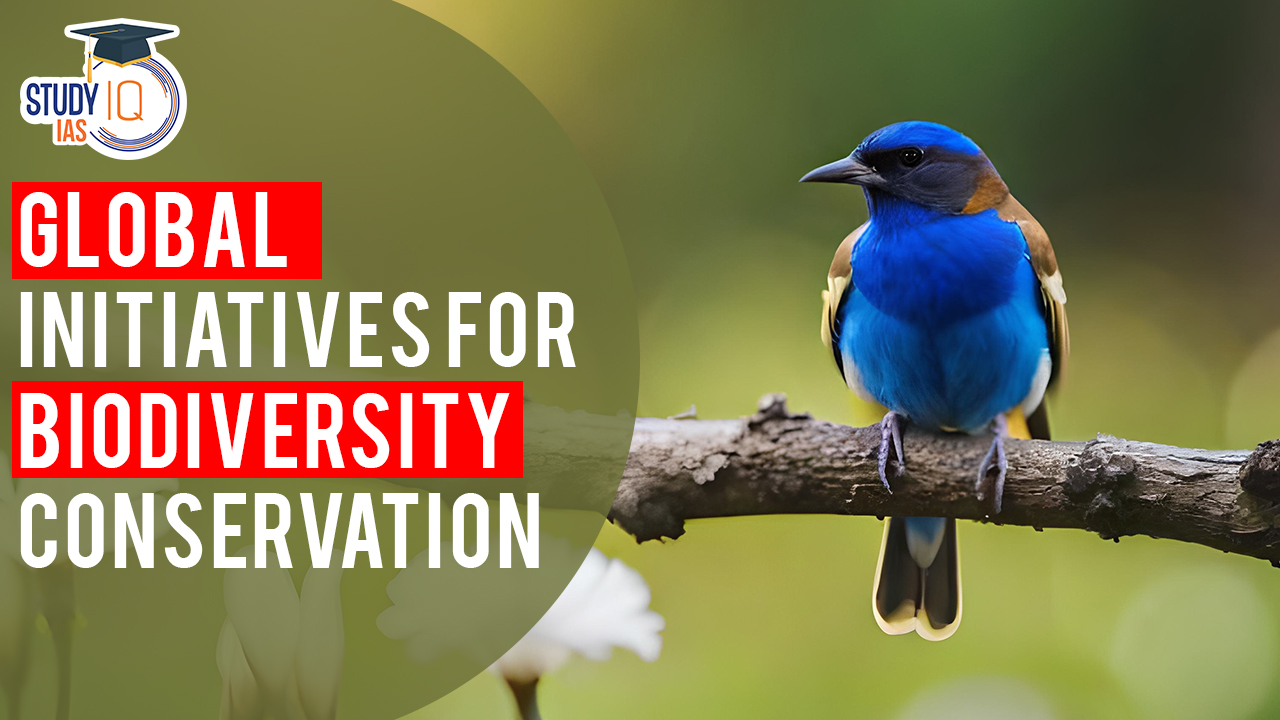Table of Contents
Biodiversity convention aim is to prevent the extinction of species, plants, and their ecosystems. The wealthy nations are striving for simple access to and a reliable supply of biological resources from the developing world. As a result, the industrialized countries are now sharing the advantages of these natural resources. A larger portion of the economic gains are now being sought after by the developing nations. The unsustainable exploitation of natural resources, especially rainforests, is a worry for wealthy countries as well. Key points from the Convention on Biological Diversity.
Global Initiatives for Biodiversity Conservation
Coherent UNESCO-wide biodiversity initiatives are created in order to address all aspects of biodiversity conservation and sustainable and equitable usage from the perspective of UNESCO’s mission and pertinent programs and activities. Global Initiatives for Biodiversity Conservation have been listed below:
Man and Biosphere Programme (MAB)
- An intergovernmental research effort called the MAB program was established in 1971 with the goal of laying the scientific groundwork for enhancing how people interact with their environments.
- In order to enhance human livelihoods and safeguard natural and controlled ecosystems, it blends social and natural sciences. This advances creative methods for economic development that are both socially and culturally relevant and environmentally sustainable.
- It foretells how today’s decisions will affect the globe in the future, enhancing people’s capacity to effectively manage natural resources for the welfare of both human populations and the environment.
- The International Coordinating Council (ICC), which reports to the UNESCO General Conference and its Executive Board, is in charge of overseeing the MAB Programme on a global scale.
Biosphere Reserve
- The term “Biosphere Reserve” (BR) refers to a significant region of terrestrial or coastal/marine ecosystems, or a combination of both, and designates representative areas of natural and cultural landscapes under the auspices of the United Nations Educational, Scientific, and Cultural Organization (UNESCO).
- In order to encourage sustainable development based on the efforts of the local community and strong research, countries construct biosphere reserves, which are recognized by UNESCO’s Man and the Biosphere (MAB) Programme. The Biosphere Reserve program was introduced by UNESCO in 1971.
- Large biodiverse areas that are protected for their flora and animals are called biosphere reserves.
- Reserves for the biosphere act as “learning environments for sustainable development.”
- They act as test sites for transdisciplinary methods to managing biodiversity and conflict resolution as well as understanding and controlling changes and interconnections between social and natural systems.
- They are places that offer regional answers to international issues. Biosphere reserves encompass all ecosystem types, including terrestrial, marine, and coastal ones.
- Each website encourages ideas for balancing the protection of biodiversity with environmentally friendly use.
- Biosphere reserves are designated by national governments but remain subject to the sovereign authority of the states in which they are found.
- The first biosphere reserve was created in 1979, and since then, a total of 738 have been created in 134 different nations.
- There are now 18 designated biosphere reserves in India.
World Network of Biosphere Reserves
- The World Network of Biosphere Reserves is a unique tool for international cooperation through knowledge sharing, experience exchange, capacity building, and the promotion of best practices. It encourages North-South and South-South cooperation.
- The World Network of Biosphere Reserves, a network of top-notch locations, is part of the MAB Programme.
- It supports the Sustainable Development Goals (SDGs) and the 2030 Agenda.
- One of the most crucial international resources for creating and executing sustainable development strategies in a range of circumstances is this network.
- There are currently 738 sites in 134 nations that make up the World Network of Biosphere Reserves, including 22 transnational sites.
- Under the Man and Biosphere Reserve concept, 12 biosphere reserves in India have received international recognition.
Biodiversity Hot Spots
- The term “biodiversity hotspots,” coined in 1988 by British ecologist Norman Myers, refers to a biogeographic area having both extraordinary levels of plant endemism and significant levels of habitat degradation.
- In 1988, British ecologist Norman Myers released a groundbreaking research that identified 10 “hotspots” of tropical forests. Both the high levels of plant endemism and the significant habitat degradation in these locations set them apart.
- Conservation International, one of CEPF’s international donors, adopted Myers’ hotspots as its institutional blueprint in 1989.
- More than half of all plant species and 43% of all terrestrial animal species are found in the 36 biodiversity hotspots.
- Each biodiversity hotspot is a unique cosmos of rare plants and animals that are fighting for survival in habitats that are fast disappearing.
Biodiversity Cold Spots
- A region with a small population of living creatures, such as plants, animals, fungi, and bacteria, is referred to as a “biodiversity cold spot”.
- These regions have little biological variety yet are losing habitat quickly.
- The fitness of at least one of the two species is influenced by interactions with the other in cold places.
- The last major wilderness landscapes are found in biodiversity cold spots, which also contain unique evolutionary lineages and rare species, support a variety of animal species, and may have more supportive national policy environments for conservation success.
- Furthermore, more protection, management, and restoration would be advantageous for all cold zones.
Convention on Biological Diversity (CBD)
- It has its roots in the 1992 Rio summit.
- The purpose of this multilateral agreement is “the conservation of biological diversity, the sustainable use of its components, and the fair and equitable sharing of the benefits arising from the utilization of genetic resources.” It has been ratified by 196 nations.
- Its main objective is to promote behaviors that will result in a more sustainable future.
- It includes the Nagoya and Cartagena Protocols.
Convention on International Trade in Endangered Species of Wild Fauna and Flora (CITES)
The CITES aims to ensure that international trade in specimens of wild animals and plants does not threaten their survival. Through its three appendices, the Convention accords varying degrees of protection to more than 30,000 plant and animal species.
Global Initiatives for Biodiversity Conservation UPSC
A key feature of the blue planet is the existence of a huge diversity of living forms. All types of life, from bacteria to plants to animals, serve essential functions on the one celestial body in the universe where life is known to exist. These life forms have dynamic connections with one another. Any life form on earth requires the assistance of other living beings to survive, whether directly or indirectly. Thus, maintaining the planet’s ecosystems depends on biodiversity protection. To ensure a healthy planet for future generations, it is the responsibility of every person on the earth to preserve biodiversity.


 World Population Day 2025, Themes, Histo...
World Population Day 2025, Themes, Histo...
 What are Polycyclic Aromatic Hydrocarbon...
What are Polycyclic Aromatic Hydrocarbon...
 Marlin Fish: Species, Features, Appearan...
Marlin Fish: Species, Features, Appearan...





















